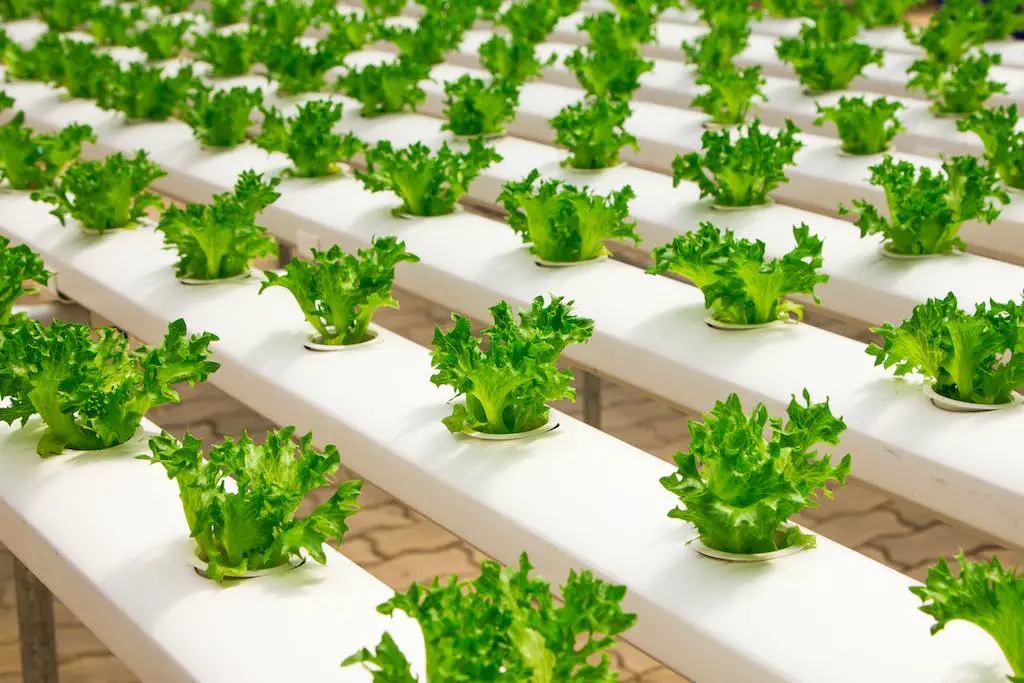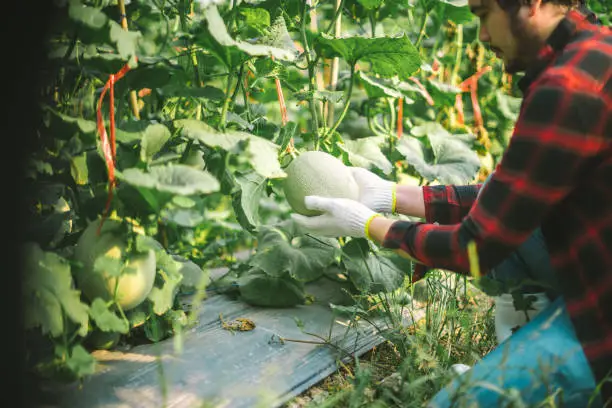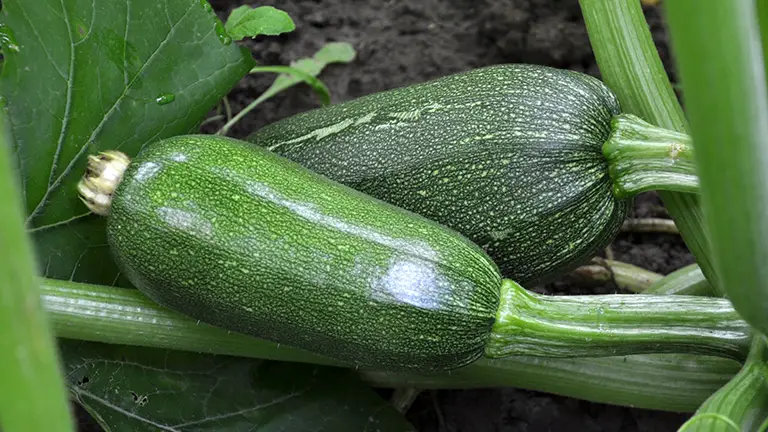Starting Seeds for Hydroponics: Rapid Rooter Instructions
Table of Contents
Understanding the Importance of Starting Seeds for Hydroponics
Starting seeds is a crucial first step in any hydroponic setup. Whether you are a beginner or an experienced gardener, understanding the importance of starting seeds for hydroponics is essential for successful cultivation. By starting seeds, you have control over the quality and variety of plants you grow, ensuring optimal growth and harvest.
One of the main benefits of starting seeds for hydroponics is the ability to select from a wide range of plant varieties. Unlike traditional gardening methods, where you are limited by local availability, hydroponics allows you to grow a diverse selection of plants that may not be readily available in your area. This opens up a world of possibilities for experimentation and allows you to cultivate plants that suit your personal preferences or market demands.
Starting seeds also gives you the opportunity to control the entire growth process, from germination to harvest. By starting with seeds, you can ensure that your plants are healthy, disease-free, and free from pests. This reduces the chances of introducing unwanted pathogens or pests into your hydroponic system, leading to higher crop yields and better overall plant health.
Moreover, starting seeds for hydroponics allows for precise and efficient use of resources. When you start seeds, you can control the number of plants you grow, eliminating the need for excessive seed purchases or wastage. Additionally, starting seeds in a controlled environment reduces the risk of seedling loss due to adverse weather conditions or pests.
In conclusion, starting seeds for hydroponics offers numerous advantages, including the ability to select from a wide variety of plants, greater control over plant health, and efficient resource utilization. By understanding the importance of this initial step, you set the foundation for a successful hydroponic garden that can yield bountiful harvests year-round.
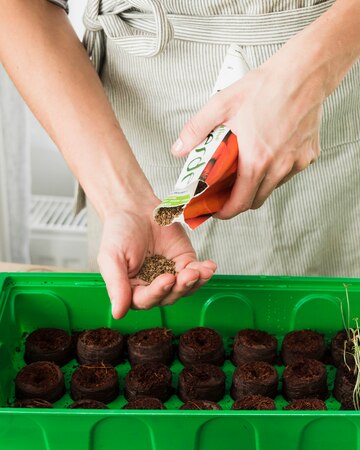
Selecting the Right Rapid Rooter for Your Hydroponic Setup
When it comes to selecting the right rapid rooter for your hydroponic setup, there are a few key factors to consider. First and foremost, you want to ensure that the rapid rooter you choose is specifically designed for hydroponic gardening. This means that it should have the necessary features and characteristics to promote healthy root development in a soilless environment.
Another important consideration is the size of the rapid rooter. The size you choose will depend on the specific needs of your hydroponic system and the type of plants you plan to grow. Larger rapid rooters can accommodate bigger plants with more extensive root systems, while smaller ones may be better suited for seed starting or smaller plants.
It’s also worth paying attention to the material of the rapid rooter. Many hydroponic gardeners prefer rapid rooters made from natural materials such as peat moss or coco coir, as they provide excellent water retention and aeration properties. Synthetic materials can also be used, but it’s important to ensure they are made from high-quality materials that won’t degrade or leach harmful substances into the hydroponic system.
By carefully considering these factors and choosing a rapid rooter that aligns with the needs of your hydroponic system and plants, you can set yourself up for success and promote healthy and robust root growth in your hydroponic garden.
Preparing the Rapid Rooter for Seed Germination
Preparing the Rapid Rooter for seed germination is a crucial step in the hydroponic cultivation process. The Rapid Rooter is a popular medium used for starting seeds due to its ability to provide optimal moisture levels and support root development. To ensure success, it is essential to properly prepare the Rapid Rooter before planting the seeds.
Before use, soak the Rapid Rooter in water to activate its moisture-retaining properties. Immerse the cube in a container of water, allowing it to absorb the moisture gradually. This process ensures that the cube is thoroughly saturated, promoting consistent moisture distribution to the seeds. After soaking, gently squeeze out any excess water to prevent oversaturation, as excessive moisture can hinder seed germination and lead to damping-off disease.
Furthermore, it is advisable to adjust the pH level of the Rapid Rooter to create an optimal growing environment for the seeds. Ideal pH levels vary depending on the type of plant being grown. Most vegetables thrive in a slightly acidic to neutral pH range of 5.5 to 6.5. Use a pH testing kit to monitor the pH level of the water used for soaking the Rapid Rooter. Adjust the pH level as necessary using pH up or pH down solutions to maintain a suitable range for your specific crop. By ensuring the correct pH level, you can foster favorable conditions for germination and support healthy seedling development.
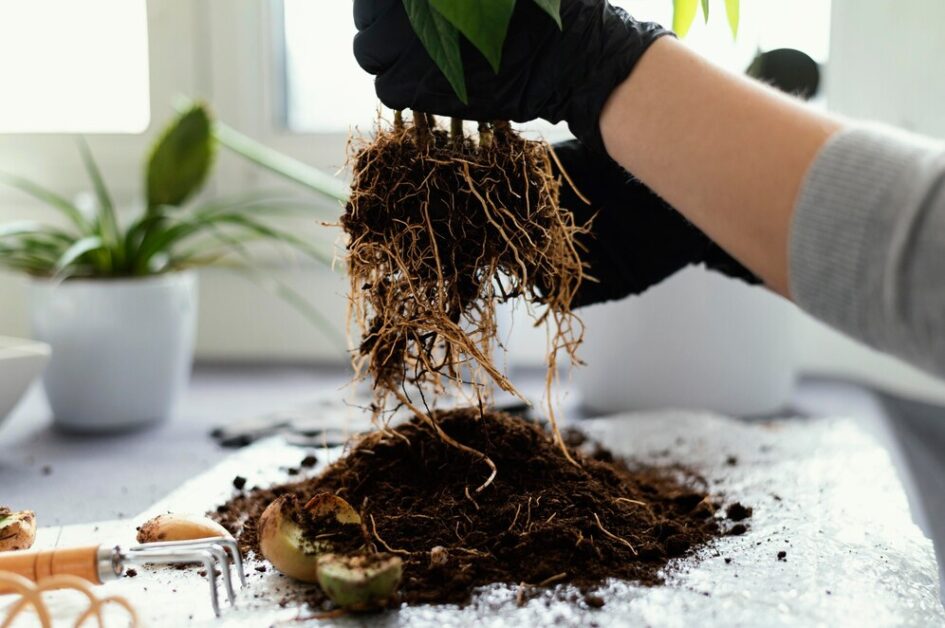
Choosing the Ideal Seeds for Hydroponic Cultivation
Selecting the ideal seeds is a crucial step in hydroponic cultivation as it directly impacts the success and productivity of your plants. When choosing seeds for hydroponics, there are several factors to consider. Firstly, it is important to select seeds that are specifically designated for hydroponic systems. These seeds are typically bred to thrive in a soilless environment and have higher chances of successful germination and growth.
Another factor to consider is the type of plant you wish to cultivate. Different plants have varying nutrient requirements, growth habits, and environmental preferences. Therefore, it is essential to choose seeds that are suitable for hydroponic cultivation and align with your specific goals. For example, if you are looking to grow leafy greens such as lettuce or spinach, select seeds that are known for their fast growth, high yield, and resistance to common diseases. On the other hand, if you are interested in growing fruiting plants like tomatoes or peppers, opt for varieties that are known for their prolific fruit production and compact growth habits, making them suitable for a controlled hydroponic setup.
In conclusion, choosing the ideal seeds for hydroponic cultivation involves selecting seeds specifically bred for hydroponic systems and considering the specific requirements and goals of your chosen plants. By taking the time to research and select the right seeds, you can ensure a successful and productive hydroponic garden.
Soaking the Seeds for Optimal Germination
Soaking the seeds before germination is a crucial step in ensuring optimal growth and development in hydroponic cultivation. By soaking the seeds, you are providing them with the necessary hydration to kick-start the germination process. This process allows the seeds to absorb water and activate the enzymes needed for growth.
To soak the seeds for optimal germination, begin by selecting a clean container that is large enough to hold your desired quantity of seeds. Fill the container with room temperature water, ensuring that it covers the seeds completely. It is recommended to use filtered or distilled water to avoid any potential contamination.
The duration of soaking time may vary depending on the type of seeds you are using, but a general rule of thumb is to soak them for 12 to 24 hours. You can also refer to the seed packaging or consult reputable sources for specific recommendations.
During the soaking period, it is important to keep an eye on the seeds to ensure they do not over-soak and become waterlogged, as this can inhibit germination. After the recommended soaking time has elapsed, carefully drain the water from the container and proceed with the next steps in the seed germination process.
By taking the time to soak your seeds before germination, you are providing them with the best possible conditions for successful growth. This simple yet vital step sets the foundation for a healthy and thriving hydroponic garden.
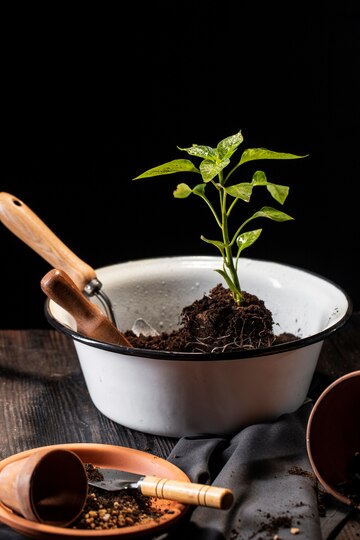
Planting the Seeds in the Rapid Rooter
When it comes to planting seeds in a Rapid Rooter for your hydroponic setup, there are a few key steps to ensure successful germination. Firstly, it is important to select the right seeds for hydroponic cultivation. Look for seeds that are specifically labeled for hydroponics or have a high germination rate. This will increase your chances of strong and healthy seedlings. Additionally, soaking the seeds before planting can help optimize germination. Soak them in water for a few hours or overnight to soften the seed coat, allowing for better water absorption and faster sprouting.
Once you have your seeds ready, it’s time to plant them in the Rapid Rooter. Gently make a small hole in the center of the Rapid Rooter plug using a toothpick or a pencil. The hole should be deep enough to cover the seeds with a thin layer of the Rapid Rooter material. Place one or two seeds into each hole and gently cover them with the surrounding material, ensuring they are not completely buried. This will provide the seeds with the right balance of moisture and oxygen needed for germination. It’s important to be careful not to damage the seeds during this process, as this can inhibit their germination.
By following these steps, you’ll be well on your way to successfully planting seeds in the Rapid Rooter for your hydroponic setup. The next crucial step is to provide the right environmental conditions for seed germination. Stay tuned for the next section of this article, where we will explore this topic in detail.
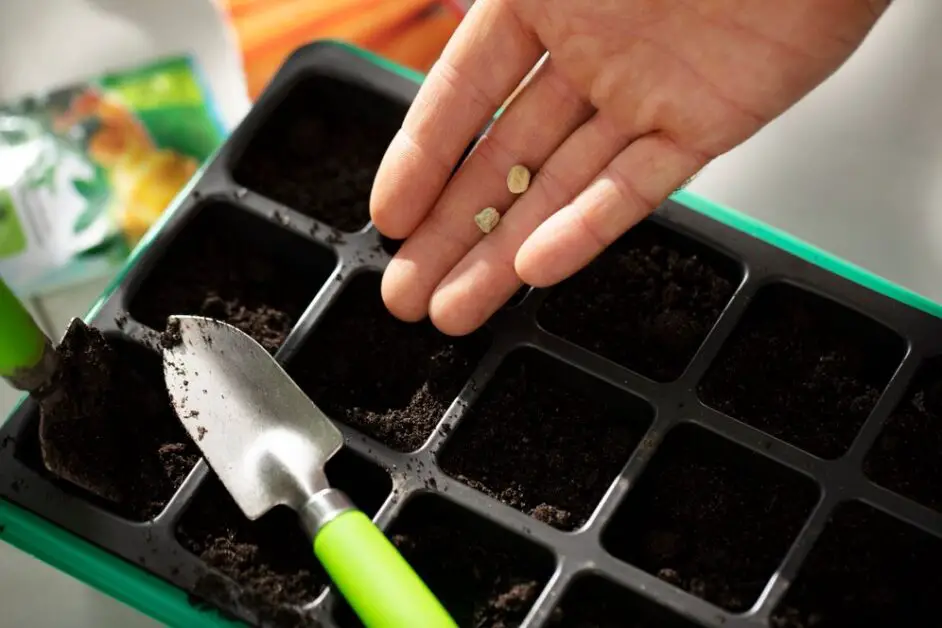
Providing the Right Environmental Conditions for Seed Germination
To ensure successful seed germination in your hydroponic system, it is crucial to provide the right environmental conditions. Maintaining a controlled environment will optimize the conditions required for seeds to sprout and develop into healthy seedlings. Let’s explore the key factors that contribute to creating the ideal environment for seed germination in hydroponics.
Firstly, temperature plays a vital role in seed germination. Most seeds require a specific temperature range to activate the germination process. Generally, temperatures between 70-85°F (21-29°C) are suitable for most plant species. However, it’s essential to consider the specific requirements of the seeds you are working with. Using a digital thermometer can help you accurately monitor temperature fluctuations within your hydroponic setup.
Secondly, maintaining adequate humidity levels is crucial for successful germination. The humidity should be kept relatively high to prevent the seeds from drying out during the germination process. A humidity dome or a humidity meter can assist you in achieving and maintaining the desired humidity levels. Typically, a humidity range of 70-80% is ideal for promoting seed germination.
Lastly, ensuring proper air circulation is necessary to prevent stagnant air around the seeds. Good airflow helps prevent the growth of mold and other pathogens that could harm germinating seeds. If your hydroponic system lacks natural airflow, incorporating a small fan can help circulate fresh air throughout the germination area.
By carefully regulating temperature, humidity, and air circulation, you can create an environment that encourages successful seed germination in your hydroponic system. Implementing these environmental conditions will set the foundation for healthy seedling development and a thriving hydroponic garden in the long run.
Maintaining Proper Moisture Levels in the Rapid Rooter
Proper moisture levels are crucial for the successful germination of seeds in a hydroponic system. The rapid rooter, a popular choice for starting seeds, requires specific attention to maintain the correct moisture balance. Overwatering can suffocate the seeds, while underwatering can hinder germination. Therefore, it is important to find the right balance to ensure optimal conditions for seedling development.
To maintain proper moisture levels in the rapid rooter, it is essential to monitor the moisture content regularly. A simple but effective way to do this is by gently squeezing the rapid rooter between your fingers. If it feels too dry and crumbly, it requires watering. On the other hand, if it feels excessively wet and soggy, it’s a sign of overwatering, and you should allow it to dry out slightly before watering again. Achieving the ideal moisture level is a delicate process, but with practice, it becomes easier to gauge the moisture content accurately. Remember, consistency is key when it comes to providing the right amount of moisture for successful seed germination in a hydroponic system.
Maintaining proper moisture levels in Rapid Rooter plugs is crucial for successful seed germination. Here’s a simple table outlining the steps to ensure optimal moisture:
| Step | Action |
|---|---|
| 1 | Soak the Rooter Plugs: Begin by soaking the Rapid Rooter plugs in distilled water. This helps reduce the risk of transplant shock and ensures the peat moss retains moisture for seed germination. |
| 2 | Plant the Seeds: Each rooter plug has a hole at its center. Place a few seeds in that hole to increase the probability of successful germination. |
| 3 | Add Water: After planting the seeds, maintain moisture by ensuring the tray containing the Rapid Rooter plugs has water. Keep it at least a quarter-inch full to enhance growth on the cuttings. |
| 4 | Maintain Ideal Environment: Place the Rapid Rooter plugs in a warm, dark, and humid environment. Aim for a consistent temperature around 70-80°F (21-27°C) and a humidity level of 70-80%. |
Remember, these steps will help your seeds sprout and develop healthy roots, setting them up for successful transplantation.
Ensuring Sufficient Light for Healthy Seedling Development
To ensure the healthy development of seedlings in a hydroponic system, providing sufficient light is absolutely crucial. Light is an essential factor in photosynthesis, the process through which plants convert light energy into chemical energy to fuel their growth. Without adequate light, seedlings can become weak, elongated, and prone to disease.
When it comes to choosing the right light source for your seedlings, there are a few important factors to consider. First and foremost, the intensity of the light is key. Different plant species have varying light requirements, so it’s important to research the specific needs of the seeds you are germinating. Generally, seedlings require around 12-16 hours of light per day for optimal growth. It’s also important to position the light source at the appropriate distance from the seedlings to avoid burning or overheating them.
In addition to intensity, the quality of light is also important. Natural sunlight is the best option, but if that’s not available or practical, you can use artificial lighting such as fluorescent or LED grow lights. These lights should emit a spectrum similar to natural sunlight, with a balance of both blue and red wavelengths. Blue light promotes seedling growth and helps with leaf development, while red light encourages flowering and fruiting. Consider using a combination of both blue and red lights, or full-spectrum lights, to provide the best conditions for your seedlings’ development.
Monitoring and Adjusting pH Levels in the Hydroponic System
Maintaining the optimal pH levels in your hydroponic system is crucial to the success of your plants’ growth and development. pH, which stands for “potential of hydrogen,” refers to the acidity or alkalinity of a solution. Different plants have varying pH preferences, and it is essential to monitor and adjust the pH levels to ensure a suitable environment for your plants.
Regularly monitoring the pH levels of your hydroponic system is a proactive approach to prevent nutrient deficiencies or toxicities that can hinder plant growth. pH levels in hydroponic systems can fluctuate due to factors such as water quality, nutrient solutions, and microbial activity. A pH testing kit or a digital pH meter can help you accurately measure the pH levels of your system.
To maintain optimal pH levels, adjustments may be necessary. If the pH is too high (alkaline), you can lower it by adding an acidic substance such as citric acid or phosphoric acid. Conversely, if the pH is too low (acidic), you can raise it by adding alkaline substances like potassium hydroxide or calcium carbonate. Regular monitoring and adjustments will ensure that your hydroponic system maintains the ideal pH range, promoting healthy plant growth and maximizing nutrient uptake.
Remember, the pH requirements may differ for different plant species, so it is essential to research and understand the specific pH preferences of your chosen plants. By diligently monitoring and adjusting pH levels in your hydroponic system, you will create a balanced and optimal environment for your plants to thrive.
Nutrient Solutions for Supporting Seedling Growth
Nutrient solutions play a crucial role in supporting the growth and development of seedlings in hydroponic systems. These solutions are specifically formulated to provide the necessary elements and compounds that are essential for healthy and robust seedling growth. As seedlings rely solely on these nutrient solutions for their nutritional needs, it is important to select the right solution and ensure its proper application.
When choosing a nutrient solution for supporting seedling growth, it is essential to consider the specific requirements of the plants being cultivated. Different plant species have varying needs in terms of nutrient composition and concentration. It is recommended to refer to reputable sources or consult with experts to determine the appropriate nutrient solution for specific plants. It is also important to understand that nutrient solutions should be tailored to different growth stages of the seedlings, as their nutritional requirements change over time.
Proper application of the nutrient solution is equally important for supporting seedling growth. This involves accurately measuring and mixing the solution according to the recommended ratios and concentrations. It is essential to follow the instructions provided by the manufacturer or consult with a hydroponics expert to ensure precise application. Over- or underfeeding seedlings can have detrimental effects on their growth and overall health. Regular monitoring of the pH levels and nutrient concentrations in the solution is important to maintain optimal conditions for seedling growth. By providing the right nutrient solution in the appropriate amounts, gardeners can promote strong, healthy seedlings that have a greater chance of thriving in the hydroponic system.
Transplanting Seedlings from Rapid Rooter to Hydroponic System
Once the seedlings have reached the appropriate size and are showing healthy root development in the Rapid Rooter, it is time to transplant them into the hydroponic system. Transplanting seedlings is a critical step in the cultivation process, as it allows the plants to establish themselves in their new environment and continue their growth.
Before transplanting, ensure that the hydroponic system is properly set up and all necessary components, such as reservoirs, pumps, and nutrient solutions, are in place. Gently remove the seedlings from the Rapid Rooter, being careful not to damage the delicate roots. Place each seedling into its designated growing site in the hydroponic system, ensuring that the roots are fully submerged in the nutrient solution. Proper spacing between seedlings is important to allow for air circulation and prevent overcrowding. Once all the seedlings have been transplanted, carefully adjust any necessary support structures, such as trellises or stakes, to provide stability and guide the plants’ vertical growth.
Caring for Seedlings in the Hydroponic System
Caring for seedlings in the hydroponic system is a crucial step towards ensuring their healthy growth and development. Once the seedlings have been successfully transplanted into the hydroponic setup, it is essential to provide them with the right care and attention to maximize their potential.
First and foremost, it is important to maintain proper water and nutrient levels in the system. Regularly check the pH and nutrient solution levels and make any necessary adjustments to ensure they are within the optimal range for seedling growth. Remember, maintaining a balanced nutrient solution is key to preventing nutrient deficiencies or toxicities that can hinder the seedlings’ progress.
In addition to nutrient levels, providing sufficient light is vital for seedling development. Make sure to place the hydroponic system in an area that receives ample light or use artificial lighting, such as fluorescent or LED grow lights, to supplement the natural light. aim to provide the seedlings with 16 to 18 hours of light per day, simulating the ideal conditions for their growth.
Another crucial factor to consider when caring for seedlings in a hydroponic system is ventilation. Proper airflow can help prevent the development of mold, mildew, or other diseases that thrive in moist environments. Consider using fans or opening windows to ensure there is adequate air circulation around the seedlings.
Regular monitoring is essential to detect any signs of stress or nutrient deficiencies in the seedlings. Keep a close eye on their growth, color, and overall health. If you notice any abnormalities, such as yellowing leaves or stunted growth, it is important to take prompt action to identify and address the underlying issue.
Lastly, be sure to keep the hydroponic system clean and free from any debris or pests. Regularly inspect and clean all components to prevent the buildup of algae, bacteria, or other contaminants that can harm the seedlings. Additionally, implement appropriate pest control measures, such as using organic pesticides or introducing beneficial insects, to safeguard the seedlings from potential infestations.
By providing the seedlings with optimal care, you are setting the foundation for their healthy growth and future success in the hydroponic system. With consistent monitoring and attention to their needs, you will maximize their potential and enjoy a bountiful harvest.
Preventing Common Seedling Problems in Hydroponics
Common seedling problems can be a source of frustration for hydroponic growers, but with proper prevention measures, these issues can be minimized. One common problem is damping-off, which is a fungal disease that can cause the young seedlings to rot at the base and eventually collapse. To prevent damping-off, it is essential to ensure good air circulation and avoid overwatering the seedlings. Additionally, using a sterile growing medium and maintaining proper sanitation practices can help reduce the risk of fungal infections.
Another common issue is the development of leggy seedlings, which are tall and thin with weak stems. This can be caused by insufficient light or overcrowding of seedlings. To prevent leggy seedlings, it is crucial to provide adequate light intensity and duration. Using high-quality grow lights or positioning seedlings near a south-facing window can help ensure they receive enough light. Additionally, spacing seedlings appropriately and thinning them out when necessary can help promote healthy growth. By taking these preventive measures, hydroponic growers can minimize common seedling problems and set the foundation for successful cultivation.
Explore
Proper care during the seedling stage is essential for successful hydroponic growth. Below, I’ve created a table outlining common seedling problems in hydroponics and their preventive measures:
| Problem | Description | Preventive Measures |
|---|---|---|
| 1. Tall, Floppy Seedlings | Seedlings that grow excessively tall and weak due to insufficient light. | – Provide Adequate Light: Use high-quality LED or T5 fluorescent grow lights. Avoid cheap or inadequate lighting. Calculate lighting needs based on canopy area. |
| 2. Wilting and Drooping | Seedlings showing signs of dehydration or stress. | – Maintain Proper Moisture: Ensure consistent water supply. Monitor root health and prevent clogged drains or outlets. |
| 3. Clogging and Blockages | System components getting blocked, affecting water flow. | – Regular Inspection: Check for root overgrowth, clogs, and blockages. Keep drains and outlets clear. |
| 4. System Leaks | Water leaks from joins, valves, or reservoirs. | – Test System Before Planting: Tighten valves and secure connections. Choose a reservoir that comfortably holds all nutrient solution. |
| 5. Insufficient Lighting | Poor performance due to incorrect or inadequate lighting. | – Quality LED or T5 Lights: Research and invest in quality lights. Ensure sufficient light wavelengths for plant growth. |
| 6. Electrical Malfunctions | Issues with pumps, timers, or other electrical components. | – Regular Maintenance: Inspect and maintain electrical components. Address any malfunctions promptly. |
| 7. Lack of Nutrients | Seedlings not receiving essential nutrients. | – Balanced Nutrient Solution: Monitor nutrient levels. Follow recommended ratios for optimal growth. |
| 8. pH Imbalances | Incorrect pH affecting nutrient uptake. | – Monitor pH Regularly: Adjust pH using appropriate solutions. Maintain pH within the ideal range. |
Remember, proactive monitoring and timely adjustments are key to preventing these common seedling problems in hydroponics.
Regularly Inspecting and Maintaining the Rapid Rooter
Regularly inspecting and maintaining the Rapid Rooter is crucial for ensuring the healthy growth of your hydroponic seedlings. By regularly checking the condition of the Rapid Rooter, you can catch any issues early on and take appropriate action to prevent them from affecting the development of your plants.
One important aspect of inspecting the Rapid Rooter is to check for any signs of mold or fungal growth. As the Rapid Rooter provides a moist environment ideal for germination, it can also create a favorable condition for mold or fungus to thrive. Therefore, it is essential to carefully examine the Rapid Rooter for any visible signs of mold or fungal growth, such as discoloration or fuzzy patches. If you find any, it is recommended to remove the affected seedlings immediately and take steps to prevent the spread of the mold or fungus throughout your hydroponic system. Additionally, regularly inspecting the Rapid Rooter also allows you to assess the moisture levels. The Rapid Rooter should be adequately hydrated, but not excessively saturated, as excessive moisture can lead to root rot or other moisture-related issues. By monitoring the moisture levels regularly, you can adjust the watering schedule accordingly to ensure optimal growing conditions for your seedlings.
Troubleshooting Tips for Successful Seed Starting in Hydroponics
Troubleshooting Tips for Successful Seed Starting in Hydroponics
Starting seeds for hydroponic cultivation can be a delicate process, and every gardener may encounter challenges along the way. However, with some troubleshooting techniques, you can increase your chances of successful seed germination and healthy seedling development. Here are some tips to help you troubleshoot common issues in seed starting for hydroponics:
1. Ensure proper moisture levels: One common problem in seed starting is either overwatering or underwatering the seeds. It is important to maintain consistent moisture levels in the rapid rooter, neither letting it dry out nor letting it become waterlogged. Check the moisture content regularly and adjust as needed to provide the optimal environment for germination.
2. Monitor and adjust pH levels: pH levels play a crucial role in nutrient availability for the seeds. If the pH of your hydroponic system is too high or too low, it may hinder germination or affect the nutrient uptake of the seedlings. Regularly test and adjust the pH levels to ensure they are within the appropriate range for optimal seed starting.
By addressing these common issues, you can troubleshoot seed starting problems in your hydroponic system and increase the chances of successful germination and strong seedling growth. Remember to closely monitor the moisture levels and pH of your system and make necessary adjustments to create an ideal environment for your seeds. Stay tuned for more tips on caring for seedlings in hydroponics!
For more information watch the below video.
How important is seed starting in hydroponics?
Seed starting is crucial in hydroponics as it allows you to control the entire growth process of your plants, ensuring optimal conditions for germination and healthy seedling development.
How do I select the right rapid rooter for my hydroponic setup?
The choice of rapid rooter depends on the type of plants you are growing and the size of your hydroponic system. Consider factors such as root support, water retention, and compatibility with your chosen nutrient solution.
How do I prepare the rapid rooter for seed germination?
Before use, soak the rapid rooter in water or a diluted nutrient solution to ensure it is well-hydrated. Squeeze out any excess water to achieve the ideal moisture level for seed germination.
What seeds are ideal for hydroponic cultivation?
Any seed can be grown hydroponically, but it is best to choose seeds that are specifically labeled as suitable for hydroponics. These seeds are often disease-resistant and have been bred for optimal growth in a soilless environment.
Should I soak the seeds before germination?
Yes, soaking the seeds overnight in water can improve germination rates. However, avoid soaking them for too long, as this can drown the seeds.
How do I plant the seeds in the rapid rooter?
Create a small hole in the rapid rooter using a pencil or your finger. Place the seed in the hole and cover it lightly with the rapid rooter. Ensure the seed is not buried too deep to allow proper sprouting.
What are the right environmental conditions for seed germination in hydroponics?
Seeds generally require a temperature range of 70-80°F (21-27°C) and high humidity for germination. Maintain a stable and controlled environment using grow lights, heaters, humidifiers, or ventilation systems if necessary.
How do I maintain proper moisture levels in the rapid rooter?
Regularly check the moisture content of the rapid rooter by gently pressing it. If it feels dry to the touch, mist it with water or a diluted nutrient solution. Avoid overwatering, as it can lead to root rot.
What kind of light do seedlings need for healthy development?
Seedlings require bright, full-spectrum light for at least 14-16 hours a day. Use grow lights specifically designed for plant growth or position seedlings near a sunny window.
How do I monitor and adjust pH levels in my hydroponic system?
Use a pH meter or test kit to regularly measure the pH of your nutrient solution. Adjust the pH using pH-up or pH-down solutions to maintain the optimal range for your plants, typically between 5.5 and 6.5.
What nutrient solutions are best for supporting seedling growth in hydroponics?
Use a balanced nutrient solution specifically formulated for seedlings. Follow the manufacturer’s instructions for dilution rates and feeding schedules, adjusting as needed based on the growth stage of your plants.
When should I transplant seedlings from the rapid rooter to the hydroponic system?
Once the seedlings have developed a strong root system and at least two sets of true leaves, they are ready to be transplanted into the hydroponic system. This usually occurs within 1-2 weeks after germination.
How should I care for seedlings in the hydroponic system?
Maintain the appropriate nutrient solution strength, pH levels, and environmental conditions for optimal growth. Monitor water levels, provide adequate support for the developing roots, and regularly check for any signs of pests or diseases.
What are some common seedling problems in hydroponics and how can I prevent them?
Common seedling problems in hydroponics include damping-off, nutrient deficiencies, and overwatering. Ensure proper ventilation, sanitation, and hygiene practices, and follow recommended feeding schedules and nutrient solution formulations to prevent these issues.
How often should I inspect and maintain the rapid rooter?
Regularly inspect the rapid rooter for any signs of mold, algae, or root diseases. If necessary, clean or replace the rapid rooter to maintain a clean and disease-free environment for your seedlings.
What are some troubleshooting tips for successful seed starting in hydroponics?
Troubleshooting tips include adjusting environmental conditions, nutrient levels, pH levels, and water management. Additionally, addressing any signs of pests or diseases promptly can help ensure successful seed starting in hydroponics.

Nicole Burke is a dynamic writer at SouthElMonteHydroponics, fueled by her passion for horticulture and environmental sustainability. Armed with a degree in Environmental Science from a renowned institution, Nicole’s expertise lies in hydroponic gardening, organic farming, and biodiversity conservation. Her insatiable curiosity and love for nature drive her to explore innovative techniques in hydroponics, seeking to revolutionize the way we grow crops in urban environments. Nicole’s writing reflects her deep commitment to promoting eco-conscious practices and fostering a deeper connection between humans and the natural world. Through her engaging storytelling, she inspires others to embrace sustainable living and harness the power of hydroponics for a greener future.

